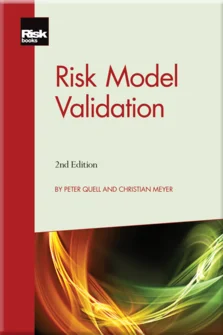Model Results
Model Results
Introduction
Basics of Quantitative Risk Models
Usage of Statistics in Quantitative Risk Models
How Can a Risk Model Fail?
The Concepts of Model Risk and Validation
Model Risk Frameworks
Validation Tools
Regulation
The Short-term Perspective
A Benchmark Model for Market Risk
The Medium-term Perspective
Modelling and Simulation
Data
Model Results
Conclusion
The previous two chapters have focused on credit portfolio models on their own (design, simulation, statistics) and on the data fed into such models on their own (parameter uncertainty, estimation uncertainty). Now, the two will be brought together. Model risk issues in credit risk models will be examined based on actual model results. Finally, various benchmarking exercises will be discussed.
EFFECTS
The risk measure (99.9% VaR) has already been on display, in Chapter 11. However, what can be said about it? Considering the small simulation error, it seems to be fairly easy to compute, but what is its meaning? Does it correspond to intuition, or is intuition a dangerous path? Will it be useful for the computation of economic capital, for example? To answer these questions, we will have a closer look at the loss distribution and then perform extensive sensitivity analysis.
The loss distribution
The VaR is only a single number, and not much information can be extracted from it. Instead, one has to consider the whole loss distribution. From a distance, of course, loss distributions will almost always look like they do in the textbooks: right-skewed (ie, with positive skewness) and
Copyright Infopro Digital Limited. All rights reserved.
As outlined in our terms and conditions, https://www.infopro-digital.com/terms-and-conditions/subscriptions/ (point 2.4), printing is limited to a single copy.
If you would like to purchase additional rights please email info@risk.net
Copyright Infopro Digital Limited. All rights reserved.
You may share this content using our article tools. As outlined in our terms and conditions, https://www.infopro-digital.com/terms-and-conditions/subscriptions/ (clause 2.4), an Authorised User may only make one copy of the materials for their own personal use. You must also comply with the restrictions in clause 2.5.
If you would like to purchase additional rights please email info@risk.net











